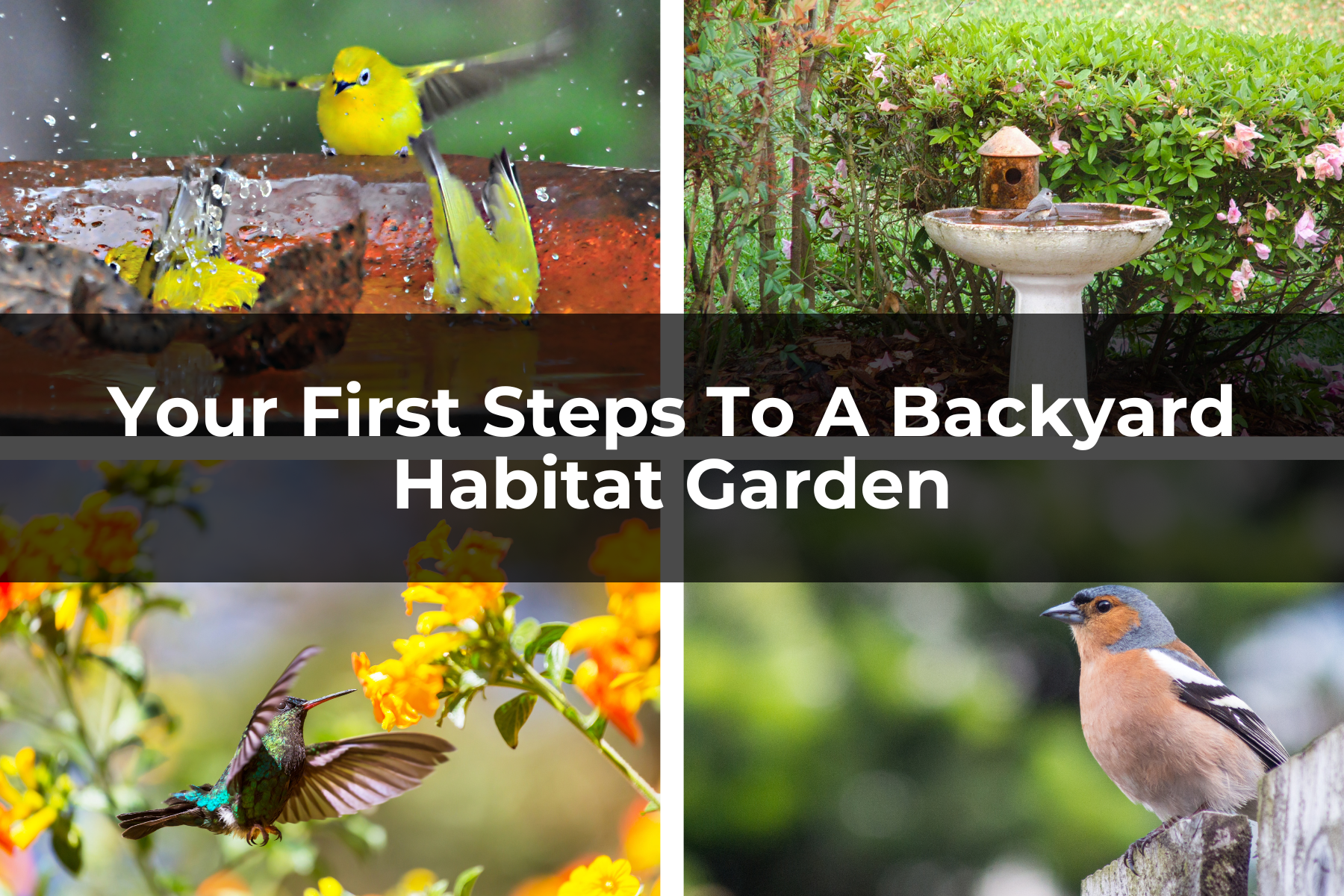Last Updated on April 8, 2024 by Real Men Sow
Similarly to an arboretum, a habitat garden is a site where various plant species are grown. No matter how big or little, simple or complex, they all have one thing in common: they are vibrant with life. These areas allow us to beautify the outside of our houses, grow our victory gardens, or just enjoy the outdoors in peace and beauty. The likes of small animals, birds, insects, and reptiles all utilize these areas for refuge, food, and reproduction. We may not see it, yet our habitat gardens are home to a wide range of organisms.
Plant a Habitat Garden for All Seasons
Many people love a canopy of trees or a birdbath, but it’s the selection of plants and their pollen, seeds, and berries that keep them coming back season after season. Think about the wildlife that depends upon your choices when you visit the nursery next time.
- Select red and orange plants with trumpet- or bell-shaped flowers to attract gnat-catching Hummingbirds.
- Songbirds will be attracted to berry-producing shrubs, and the seed heads of summer blooms that are still in their shells, and they can also be used to keep them away from any edible produce.
- The pollen-rich flowers attract bees and butterflies, which will pollinate the garden to produce more blooms and fruit.
- Moth-eating bats and moths are attracted to plants that release pleasant scents at night.
Habitat Garden Insectivore Birds
Some birds rely heavily on plants, such as nectar, seeds, fruits, and nectar. Others feed as carnivores with animal prey or as omnivores with a mix of plant/animal matter. Bird species that are mostly insectivores rely on insects for prey. This means the ecological and economic value of insectivorous birds in controlling potentially harmful pests worldwide, especially in forested areas.
Birds provide many ecosystem services, but they are often overlooked and underappreciated. Therefore, quantifying birds’ services is critical to understanding their importance in ecosystems and for people who benefit from them.
Encourage Natural Habitat Garden Helpers
- A birdbath will attract birds to your yard and help you keep it pest-free. The drink will also be enjoyed by the squirrels.
- Consider natural habitats. Frogs and toads love to rehydrate in shallow waters and then retreat under logs or rocks. A saucer of water and a toad home in a sunny spot are good options.
- Skinks and lizards prefer warm surfaces for loungings, such as concrete, rocks, and terracotta. They hibernate beneath leaf litter, but they also seek shelter under vines and ground cover.
- Although bees and butterflies need water, they prefer shallow bowls. Place a pot saucer filled with gravel or beautiful marbles and water it in your garden.
- Incorporate native plants into your garden. The evolution of native fauna is alongside the evolution of native flora. They provide shelter, nesting material, and familiar food throughout the year.
Don’t Clean Up Too Much
Gardens are not perfect and are places where you can witness the cycles of nature. Insects can bring hunger to birds, who will stay for hours in search of delicious tidbits such as tomato hornworms or other caterpillars. The tiny seeds found in the flower heads of dead flowers are a favorite treat for finches, and they will be dispersed next year.
Fallen leaves make a natural mulch that attracts earthworms, retains moisture, and discourages weeds. They provide shelter for salamanders, skinks, and lizards that eat garden pests.
Observe Your Habitat Garden
If you look closely, you will see how our natural predators are at work.
- Parasitic wasps “mummified” aphids
- Braconid wasps laid their eggs in the tomato hornworms
- Woodpeckers look out for borers and then eat them
- Prayer mantises have attached egg cases to branches of our shrubs as a way to help
- Lizards love grasshoppers and crickets
- Hummingbirds make beautiful gnatcatchers \
- Songbirds can see caterpillars clearly.
Many beneficial predatory insects help to keep bad bugs under control. These populations can be protected by relying on the insectivores of nature rather than using chemical ones.
Use Integrated Pest Management
Be mindful of the delicate balance that exists in nature before you reach for pesticides. Even organic control options like soapy water can affect a plant’s natural defenses. Be aware of your pests and choose selective over broad-spectrum controls. This will preserve beneficial insects.
Apply controls early in the morning or late at night when pollinators and bees are less active. It’s also important to always begin with the mildest deterrent. Use water to blast the aphids, and pick up snails and caterpillars by hand. And for ants, apply diatomaceous earth and hang pheromone traps.
It’s best to use biological controls for larger problems. These are safe for your home and you can use it to control many lawn pests, beetle bugs, and other nuisances. There are many varieties available at local nurseries and online for home delivery. Natural mulches are there to encourage earthworms, natural decomposers, and other beneficial insects. Use compost and worm castings to build healthy soil. You may also reduce tillage.
Involve Your Family
Take a look at the local nature guide books to learn how to identify new garden visitors. Learn about how nocturnal animals such as raccoons, squirrels, and possums use the nighttime to visit gardens and forage for grubs and snails.
Involve your family in making shelters, birdhouses, and feeders. Children enjoy wildlife watching and can often develop a lifetime appreciation for nature through early observation. Spend time outside with your family and enjoy the outdoors. It is nice to be able to relax knowing that our efforts are making the world a better place. Also, our gardens are supporting a lot more than we.


